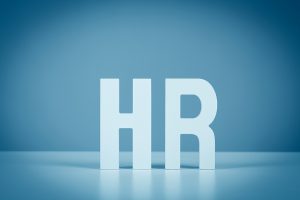
Enable Group | May 14, 2024
For Employers ● 3 min read
Human Resources (HR) plays a pivotal role in shaping an organisation’s success by managing its most valuable asset: its people. However, the effectiveness of HR efforts is often challenging to quantify. In today’s competitive landscape, businesses must not only implement HR strategies but also measure their impact to ensure continuous improvement. This article delves into essential metrics that help gauge HR effectiveness and drive strategic decision-making.
1. Employee Turnover Rate
Employee turnover rate is a fundamental metric that reflects the percentage of employees leaving an organisation within a specific period. A high turnover rate can signal underlying issues such as dissatisfaction, poor management, or lack of growth opportunities. Conversely, a low turnover rate indicates employee satisfaction and a stable work environment. HR teams can analyse turnover rates by department, location, or job role to identify problem areas and implement targeted retention strategies.
2. Time-to-Fill
Time-to-fill measures the average duration from a job opening being posted to the position being filled. A lengthy time-to-fill can result in productivity gaps and increased recruitment costs. HR teams must streamline their hiring processes, leverage technology for candidate sourcing and assessment, and maintain communication with hiring managers to expedite the recruitment cycle. Reducing time-to-fill not only enhances workforce agility but also ensures timely talent acquisition.
3. Cost Per Hire
Cost per hire calculates the total expenses incurred in recruiting and onboarding a new employee. This metric includes recruitment advertising, agency fees, background checks, and training costs. By tracking cost per hire, HR departments can evaluate the efficiency of their recruitment strategies and identify opportunities to optimise resources. Lowering the cost per hire while maintaining quality standards is indicative of effective HR management.
4. Absenteeism Rate
Absenteeism rate measures the percentage of scheduled work hours that employees miss due to unplanned absences. High absenteeism can impact productivity, team dynamics, and overall morale. HR professionals must monitor absenteeism trends, identify root causes such as health issues or work-related stress, and implement wellness programs or flexible work arrangements to mitigate absenteeism. A proactive approach to managing absenteeism fosters a healthier and more engaged workforce.
5. Training and Development ROI
Investing in employee training and development is crucial for enhancing skills, boosting performance, and retaining top talent. HR teams can assess the return on investment (ROI) of training initiatives by measuring improvements in key performance indicators (KPIs), employee feedback, and career progression. Calculating the ROI of training programs helps HR leaders allocate resources effectively, prioritise learning initiatives, and demonstrate the value of continuous professional development to stakeholders.
6. Diversity and Inclusion Metrics
Diversity and inclusion (D&I) are integral components of a successful HR strategy, contributing to innovation, employee engagement, and organisational resilience. Metrics such as workforce diversity, representation in leadership roles, and employee satisfaction surveys provide insights into an organisation’s D&I efforts. HR professionals should establish measurable D&I goals, implement inclusive policies and practices, and regularly assess progress to create a diverse and equitable workplace.
7. Employee Engagement Scores
Employee engagement reflects the level of commitment, motivation, and satisfaction among employees. Engaged employees are more productive, loyal, and contribute positively to organisational culture. HR departments can measure employee engagement through surveys, feedback mechanisms, and performance evaluations. Analysing engagement scores allows HR leaders to identify areas for improvement, address employee concerns, and design initiatives that enhance workplace engagement and well-being.
Conclusion
In conclusion, measuring HR effectiveness through key metrics enables organisations to evaluate performance, identify areas for improvement, and align HR strategies with business goals. By focusing on metrics such as turnover rate, time-to-fill, cost per hire, absenteeism, training ROI, diversity and inclusion, and employee engagement, HR professionals can drive meaningful change, foster a positive work environment, and contribute to long-term success.
As organisations navigate the complexities of HR management and strive for continuous improvement, partnering with a reputable HR outsourcing provider can offer strategic advantages. Enable Consulting is a leading provider of HR outsourcing services, offering tailored solutions to optimise HR functions, improve efficiency, and drive business growth. By leveraging Enable Consulting’s expertise, organisations can access a range of HR solutions, including recruitment, HR payroll system management, compliance, employee relations, HRMS software in Singapore, and more. With a focus on measurable outcomes and client satisfaction, Enable Consulting empowers businesses to enhance HR effectiveness, streamline operations, and achieve their strategic objectives.
For more information, do not hesitate to contact us today.

Enable Group | Jul 13, 2022
The payroll function is critical for any company. It affects business reputation, employee morale, and financial stability, among other things. Employees count on receiving their paycheck on time and without mistakes, as their financial well-being depends on it. If payments are late or inaccurate, this can result in a lack of trust among all employees […]
For Employers • 2 min read

Enable Group | Jun 19, 2024
In today’s fast-paced business environment, companies across Southeast Asia are constantly seeking ways to enhance efficiency, reduce costs, and focus on their core competencies. One effective strategy that has gained significant traction is the outsourcing of Human Resources (HR) functions. By outsourcing HR tasks, businesses can streamline operations, ensure compliance, and leverage specialised expertise without […]
For Employers • 3 min read

Enable Group | Mar 23, 2023
The Human Resources (HR) department plays a pivotal role in any operation as they manage a business’s most valuable asset — its employees. Consequently, having a competent HR team is necessary for the success of any business, and there are numerous HR services in Singapore that can help firms build a strong HR team. In […]
For Employers • 2 min read